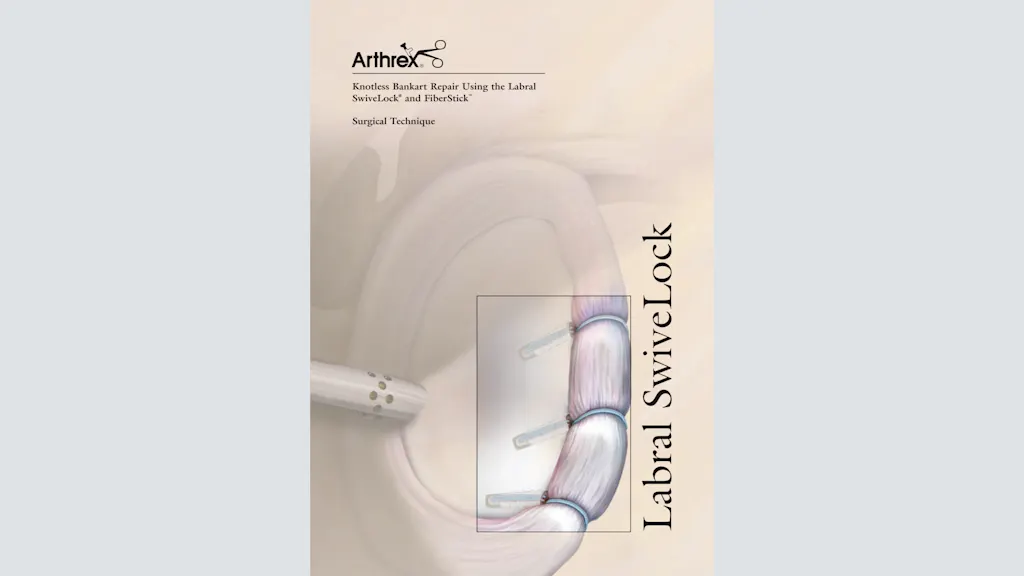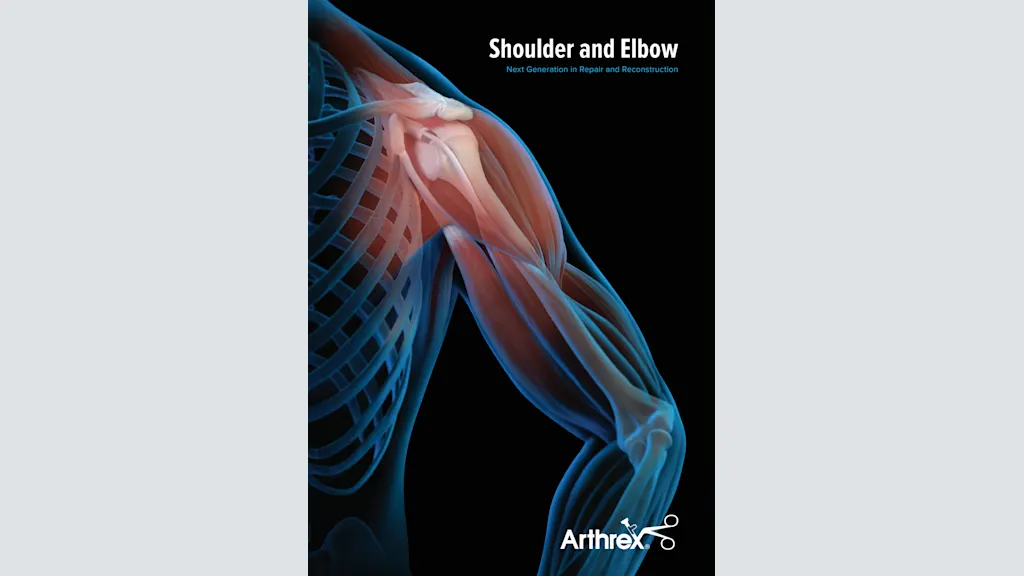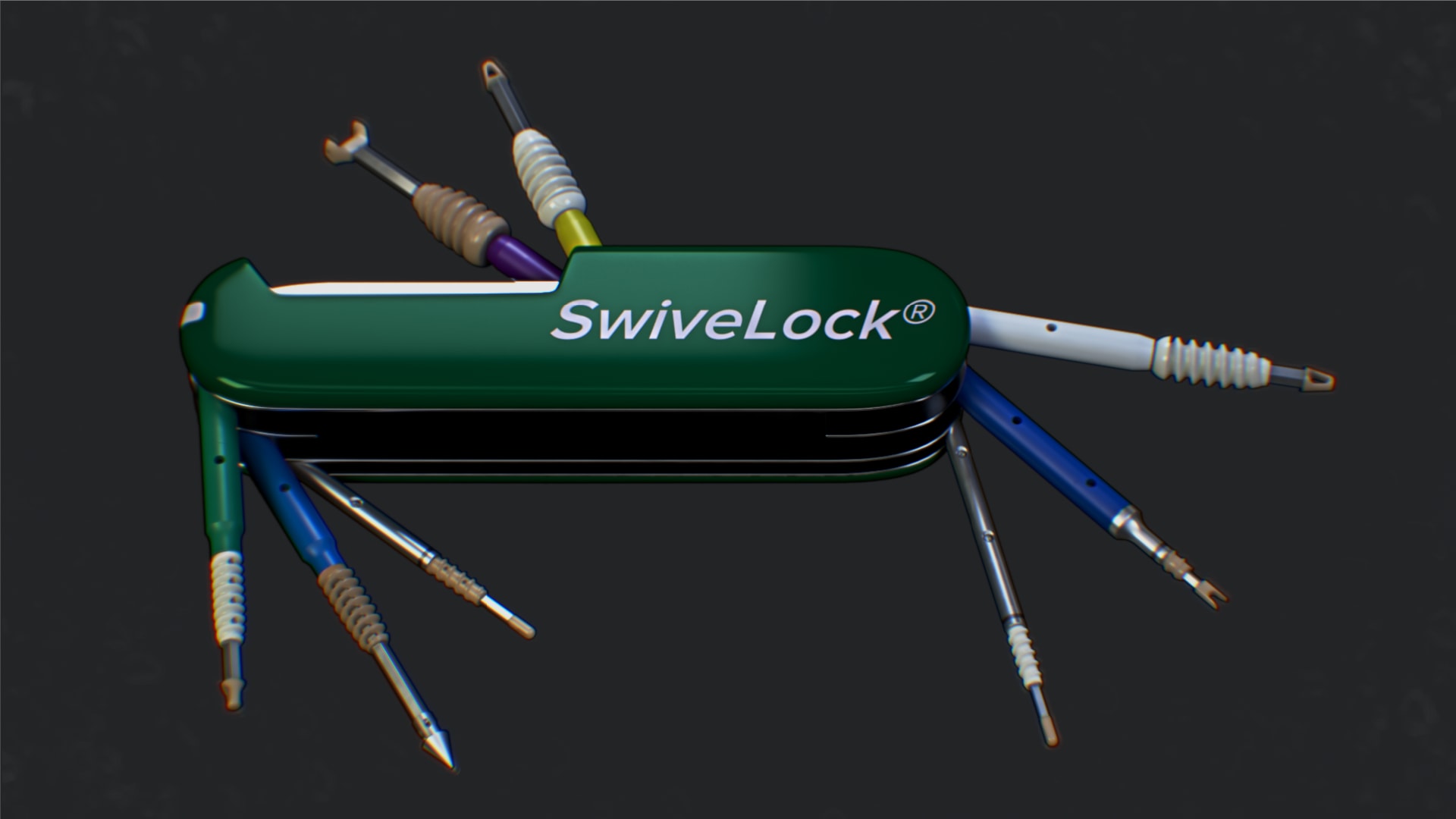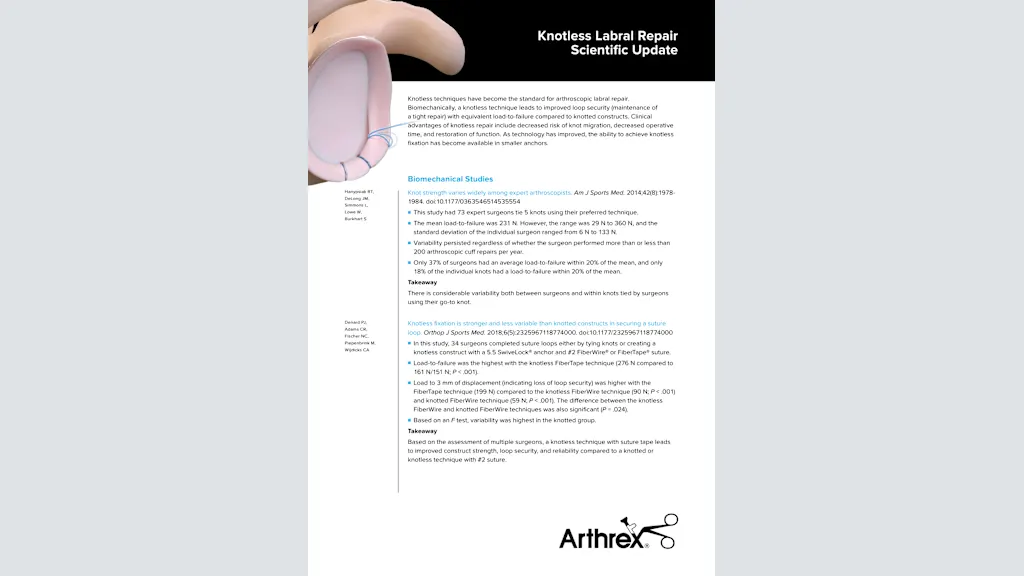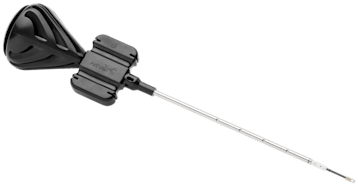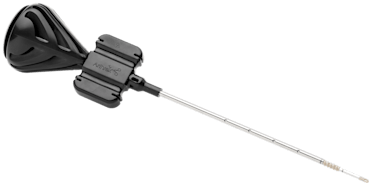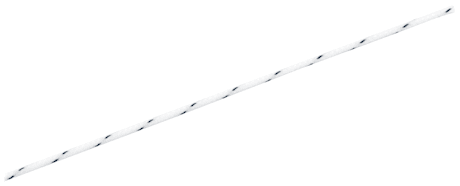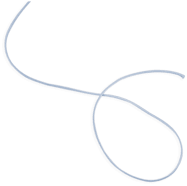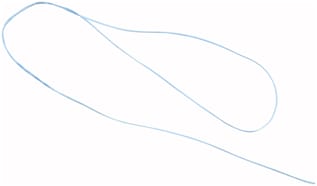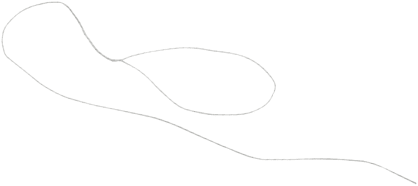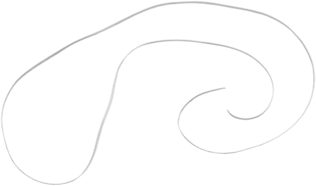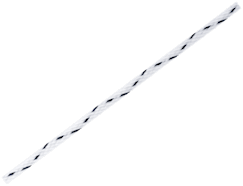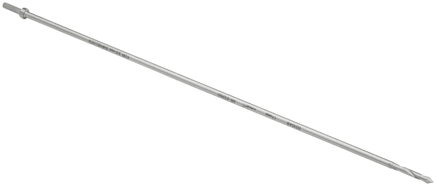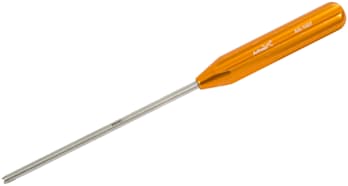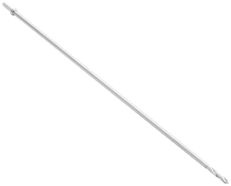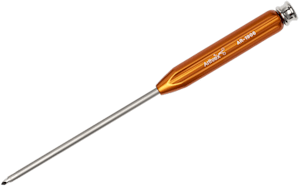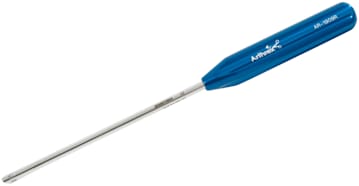Educational Resources and Products
Videos
(10)
arrow_drop_down
Videos
Documents
(3)
arrow_drop_down
Documents
English
(13)
arrow_drop_down
Languages
Clear All Filters
Surgical Technique Videos (1)
Knotless Instability Repair using the PushLock®, SwiveLock® & LabralTape™
Kyle Anderson, MD
10:16 | English | 02/24/2014 | VID1-00061-EN A
Surgical Technique Animations (1)
3.5 mm Labral SwiveLock with FiberStick
00:52 | English | 03/04/2011 | AN1-000431-en-US A
Surgical Technique Guides (1)
Knotless Bankart Repair Using the Labral SwiveLock® and FiberStick™
English | 08/06/2013 | LT1-0512-EN B
Case Presentation Videos (1)
Revision Posterior Labral Instability: Knotted to Knotless
Matthew T. Provencher, MD
04:50 | English | 10/05/2017 | VPT1-00778-EN A
Catalogs (1)
Shoulder and Elbow - Next Generation in Repair and Reconstruction 2024
English | 02/02/2024 | LB1-0220-EN AD
Presentation Videos (6)
Anterior Instability and SLAP Repair: Current Concepts
Kyle Anderson, MD
08:53 | English | 09/16/2014 | VPT1-00279-EN A
My Approach to Superior Labral Tears
Neal ElAttrache, MD
21:34 | English | 07/23/2014 | VPT1-00113-EN A
Case Presentation: What Your Knots Are Doing To The Rotator Cuff
Neal ElAttrache, MD
04:56 | English | 02/28/2012 | VPT1-0008-EN A
Double Row Labral Repair: Technique & Indications
Chris Ahmad, MD
12:13 | English | 02/27/2012 | VPT1-0009-EN A
Managing Glenoid Bone Loss: Bony Bankart Bridge
Peter J. Millett, MD, MS
03:52 | English | 02/27/2012 | VPT1-0011-EN A
Product Demonstrations (1)
SwiveLock® Suture Anchors: The Most Trusted and Versatile Soft Tissue-to-Bone Fixation System
01:14 | English | 09/18/2020 | AN1-000080-en-US B
Scientific Updates (1)
Knotless Labral Repair Scientific Update
English | 03/06/2025 | DOC1-000338-en-US C


